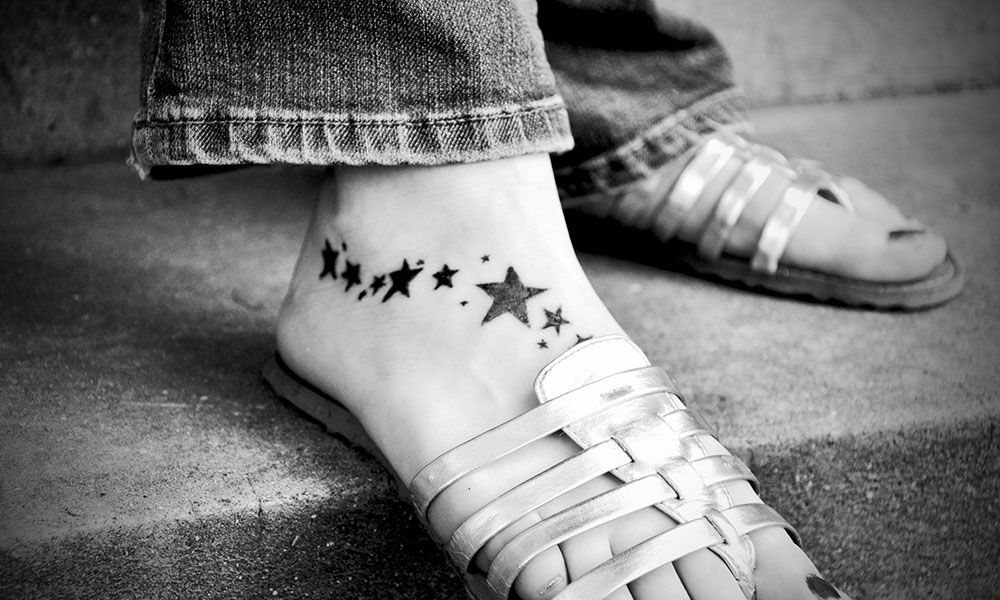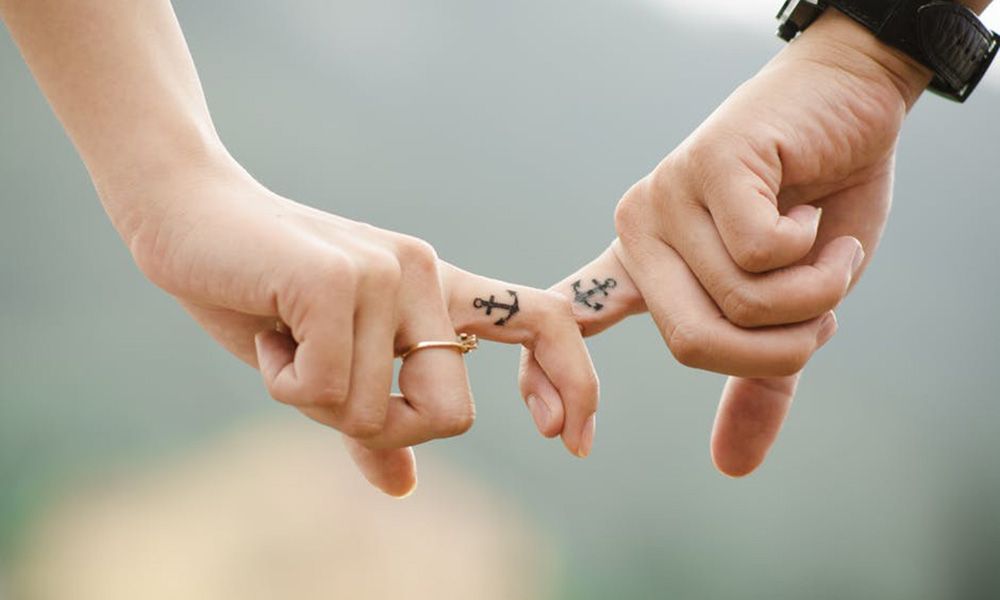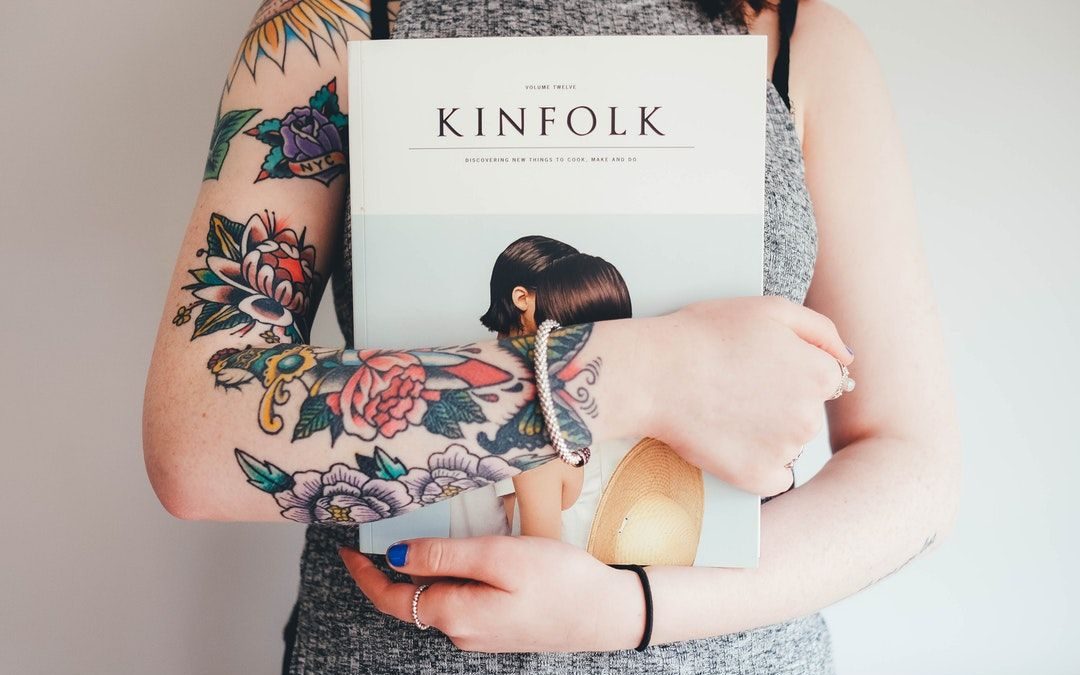
Watch Your Step: Everything You Need to Know About Foot Tattoos
Watch Your Step: Everything You Need to Know About Foot Tattoos
Foot tattoos are unique, sexy, and are easy to hide, but are they really the perfect tattoo? This guide will list the pros and cons of a foot tattoo.
Are you set on the perfect foot tattoo to decorate your dogs?
There are some important things you should know before you take the plunge —and pain is just the beginning.
Foot tattoos are unique, sexy, and are easy to hide, but are they really the perfect tattoo? This guide will list the pros and cons of a foot tattoo.
Do Foot Tattoos Hurt?
It’s well known within the tattoo industry that foot tattoos are among the most painful.
This is because, in order to insert the pigment permanently into your skin, your tattoo artist drives a needle beneath the skin’s surface. Obviously this is going to hurt on any part of your body. But places that have more nerve endings, like your foot, are going to hurt a lot more.
There are two elements to tattoos which include the linework and shading. Both can create an intense burning sensation from the needle scratching your skin. Unlike other parts of your body where flesh or muscle will help to dull the pain.
Your feet have more exposed nerve endings in your feet, over 7,000 nerve endings to be exact. At times you may feel your bones vibrating. Brace yourself for some intense pain if you’re set on a foot tattoo. If it’s your first one you might want to keep it simpler.
The other aspect that makes a foot tattoo a challenge is that your feet tend to react quickly to stimulation. Which is why if you get tickled on your feet your reflex is to kick out.
To stop yourself from jerking you’re going to have the urge to tense your body. This can lead to more pain.
This can be a problem when you’re trying to stay completely still during a tattoo. A skilled tattoo artist will expect this and be able to react accordingly.
Why Tiny Foot Tattoos Are a Bad Idea
If you’re frustrated with a tattoo artist for not giving you a tiny tattoo on your foot, then we can explain. Foot tattoos tend to bleed over time. So something very small can begin to smudge on the parts of your foot you use the most.
Ultimately they’re saving future you from a blobby mess on your foot years down the road. Make sure you find the right tattoo artist. Some will refuse to do foot tattoos at all since they can be dangerous if infected and also fade faster in the wrong places.
Where Should You Get One?
As we mentioned, getting a foot tattoo in the wrong place can lead to it fading or smudging. So where should you get a foot tattoo?
The problem is most areas on your foot are used. For example, the sides of your feet tend to rub on your shoes all day. The top of your foot is an option but it will hurt more.
Ankle tattoos need extra care to prevent them from fading in the sun. Ultimately you’ll have to find the best spot for your design as well as your body. Work with a professional to find your ideal placement.
You will also need to decide the orientation of your tattoo. Such as if the tattoo should face you right side up or be facing other people. This is all personal preference.
Care for Your Foot Tattoo
During the time when your foot tattoo is healing it’s going to be difficult to wear shoes. For this reason, you may want to plan to get your foot tattoo during the summer months or when it’s warmer. This will allow you to wear flip flops, sandals, or ballet flats.
At the same time, you don’t want to expose your tattoo to the sun for too long. In fact, your tattoo is going to need a lifetime of sunscreen applications to protect it and keep it from fading.
Yes, this is true for most tattoos that are exposed. But your foot can be especially prone to direct sunlight when wearing sandals and showing it off. So you need to be extra careful.
It’s important to strictly follow the directions of your tattoo artist. Since a tattoo is an open wound, not caring for it appropriately could lead to serious infection.
Foot tattoos are even more prone to infections than others. You won’t be able to submerge your tattoo in water or expose it to the sun for at least two weeks.
Surprise You Have A Foot Tattoo!

Foot Tattoos
The fun thing about a foot tattoo is once you’ve gotten through the pain and aftercare you’re going to be really excited each time you see it. That’s because you may forget sometimes that you even have a foot tattoo.
Foot tattoos are subtle and you probably won’t notice it every day. So when it catches your eye from time to time, it’ll be like a special surprise you get to experience again and again.
The only thing about the excitement of having a tattoo is it will make you want another one!
Despite the pain, foot tattoos are aesthetically pleasing and increasingly popular. Once you have one you’ll want to show it off to all your friends and family.
Ready to Get Inked?
Foot tattoos may be a bit more painful but they sure look amazing when completed. Once you get through a couple of weeks, you’ll be dying to get a matching one on your other foot!
If you’d like to speak with a professional tattoo artist who can provide you with the delicate foot tattoo you’re dreaming of, then check out our two locations. Our artists are highly skilled and professional.
Want to learn more about types of tattoos and piercings? Along with what to expect? Check out our blog for expert advice.
To learn more, contact us here.
Las Vegas Tattoo Shop
Lahaina Tattoo Shop
Big Island Tattoo Shop

Some Pain, All Gain: Is Tattoo Numbing Cream Worth It and Does it Work?
When you’re getting a tattoo it’s natural to be scared of the pain, but chances are it’ll be okay. Learn about tattoo numbing cream and why you don’t need it.
Getting a tattoo hurts. There’s no sugarcoating it.
If you want a tattoo, you’ll have to accept that the process will be uncomfortable.
Depending on who you talk to, you’ll get different opinions on the pain. Some people will say the pain isn’t bad, while others may describe it as the worse pain they ever experienced. This is because everyone handles pain differently.
However, there are plenty of people looking for pain-free ways to get a tattoo. One of these methods growing in popularity is tattoo numbing cream.
Some people swear it works. Others will tell you it’s a waste of time and money.
If you’re considering tattoo numbing cream for your next tattoo, you might want to think again. Find out numbing creams are worth your time and money.
What is Tattoo Numbing Cream?
In a nutshell, tattoo numbing cream is a topical cream that numbs the area of skin where it’s applied. There are different types of numbing creams with different levels of potency to make getting a tattoo less painful.
The mildest and safest of the numbing creams are “nerve deadeners.” Don’t worry, they won’t cause any damage. A common ingredient is lidocaine, which dulls discomfort on the surface of the skin.
Since this type of numbing cream doesn’t sink below the surface of the skin, it isn’t very effective for a tattoo. Most people will often mix it with other creams.
The more potent numbing creams are “nerve blockers.” Common active ingredients include tetracaine and benzocaine. They work by preventing pain signals from reaching your brain.
However, your nerves will still register pain. Even though the medication blocks the pain signals from your brain, you can still feel some discomfort. People will often mix a nerve deadener like lidocaine with a nerve blocker.
The most effective creams are “vasoconstrictors,” such as epinephrine. They constrict your blood vessels causing less bleeding and less swelling.
To make this type of numbing cream last longer, people will mix vasoconstrictors with nerve blockers or nerve deadeners. The only problem with this cream is it may affect the healing process of your tattoo.
Despite these options, there is much disagreement on whether tattoo numbing creams work.
Why People Don’t Like Tattoo Numbing Creams
Your tattoo artist probably does not like tattoo numbing creams and may refuse using them.
The main reason is tattoo numbing creams can mess up your tattoo. The cream makes your skin slippery causing the tattoo process to become more difficult. Numbing creams used after can also affect how the tattoo heals.
Many tattoo artists and tattoo enthusiasts believe the pain of a tattoo is a right of passage. The pain and irritation will make the tattoo more meaningful.
Others have experience with tattoo numbing and will tell you they just don’t work. Even if the numbing cream works in the beginning, they rarely last for the whole tattoo process.
Is it possible they used weaker numbing creams? Sure, it’s possible. But in most cases, the numbing creams won’t work as well as you hoped.
FDA Warnings
The FDA disapproves of tattoo numbing creams. The primary reason is doctors and other medical specialists should use and apply numbing creams. They know how to choose the right type of numbing cream and how to apply it.
The next issue the FDA has with numbing creams are the side-effects. There’s a risk you may experience an allergic reaction.
Leaving a numbing cream on for too long, using too much, or using the cream on damaged skin can cause the cream to enter your bloodstream. In severe cases, this can cause seizures, difficulty breathing, and comas.
If you must use a numbing cream, use only those approved by the FDA or recommended by a medical professional. Otherwise, skip them for your next tattoo.
Minimize Tattoo Pain Without Numbing Creams
Don’t worry, you can still lower the pain without resorting to tattoo numbing creams. Follow these tips and you’ll be able to tolerate the pain better than you thought.
Tip 1: Drink Plenty of Water
Before your next tattoo session, drink plenty of water. Good hydration helps with ink absorption and the healing process. Staying hydrated will also lower your chances of getting dizzy or passing out.
Tip 2: Avoid Caffeine
Unfortunately, drinking caffeine, whether it be a coffee, tea, or soda can leave you dehydrated. If possible, don’t drink any caffeine on the day of your tattoo appointment.
Tip 3: Avoid Alcohol
If you think drinking a few shots before you get your tattoo will help, think again. Alcohol causes your blood to thin which makes you bleed more during the process and affect how your skin absorbs the ink.
You also don’t want to wake up to a surprise tattoo after a long night of partying.
Tip 4: Eat a Good Meal
You don’t have to eat right before your appointment, but you’ll want a healthy meal sometime before. A healthy meal will keep your blood sugar up and help prevent you from passing out.
Tip 5: Avoid Pain Relievers
Taking pain relievers before you get your tattoo can cause blood thinning and more bleeding. If you must, wait until after you get your tattoo. Talk with your tattoo artist to find out how long to wait and what pain relievers they recommend.
Tip 6: Pick a Less Painful Area
Tattoos hurt less in some areas of your body and hurt more in other parts. When getting your first tattoo, pick a place that’s less painful such as:
-
- Shoulder
- Butt
- Arms
- Calves
- Thighs (but not the inside)
- Other fleshy or muscular areas
The more painful areas include:
-
- Wrists
- Ribs
- Knees
- Ankles
- Neck
- Other bony or areas with sensitive skin
Tip 7: Find Distractions
Often easier said than done but staying distracted will help keep your mind off the pain. Many tattoo artists are happy to talk with you to keep you distracted. In some cases, bring a book or your phone to keep your mind busy.
Ready for a Tattoo?
The pain you feel during a tattoo is only temporary. After a while, it becomes more of an annoying ache than sharp pain. If you want a quality tattoo with minimal side-effects, skip the tattoo numbing cream on your next tattoo.
Have a design in mind for your next tattoo? Let’s chat. We’ll help you find a great design and get you scheduled for your next or first tattoo.
To learn more, contact us here.
Las Vegas Tattoo Shop
Lahaina Tattoo Shop
Big Island Tattoo Shop

Walk Through the History of Tattoos in America
The Americas have a rich tradition of tattooing. Continue reading here to find out more about the history of tattoos in America.
Thinking about getting a tattoo? Do it! You’ll be joining the many that have come to understand the rich art that is tattooing.
Though, tattooing wasn’t always viewed that way.
Before you go jumping the gun, let’s take a look at the history of tattoos in America. You’ll be surprised to find how this art form has developed, and may even find inspiration for your next piece!
Let’s dive in.
Early History of Tattoos in America
Towards the end of the 19th century, tattoos were widely considered taboo in America. Socialite Ward McAllister had this to say about them: “It is certainly the most vulgar and barbarous habit the eccentric mind of fashion ever invented. It may do for an illiterate seaman, but hardly for an aristocrat.”
Though socialites like McAllister may have looked upon tattoos with disgust, there were many who valued tattoos for what they represented. Those in the military, especially, shared the understanding that tattoos were symbols of courage and patriotism.
Records of these 19th century-style tattoos were found in naval logs, letters, and diaries written by seaman. The designs of these traditional American tattoos developed from the artists who traded and improved upon each other’s styles. The tattoos evolved a series of stories and symbols that united soldiers and sailors across the World Wars.
The most well-known tattoo artist of the time was Martin Hildebrandt. In 1870, Hildebrandt opened a studio on Oak Street in New York City, considered the first tattooing establishment in America. He worked there for over 20 years, where he would soon see a shift in the country’s perception of tattoos with the rise of the traveling circus.
The Circus Sideshow
The traveling circus was the spectacle of the year for many small, rural towns across America. There, those who never left their homes and farms could experience such wonders and horrors that seemed out of this world.
One of these sideshow attractions was that of the fully tattooed person.
Frank and Emma DeBurdg were one of these exhibits. Along with the usual designs of patriotic insignias and religious symbols, the couple also displayed tattoos they shared to represent their relationship and bond.
Frank had tattooed on him a beautiful script with the words “For Get Me Not” inscribed above a pretty portrait of his wife, Emma. She, in return, had their names beautifully adorned and displayed prominently for all to see.
This display of affection for one another caught the attention of the public, appealing to their romantic senses. The DeBurdgs saw great success touring America and Europe, and with their exposure so did the art of tattooing gain appreciation with the public.
O’Reilly’s Invention
Traditional tattooing was a bit cumbersome for the artist.
Early tattoo artists used a needle attached to a wooden handle. They would dip this needle in ink and then manually stab the skin two to three times to imprint the ink onto a specific spot. The technique required great dexterity and mental fortitude.
Samuel O’Reilly revolutionized the practice almost overnight.
In addition to being a talented artist, O’Reilly was a skilled technician and mechanic. He theorized that if up and down motion of the needle could be automated, the artist could tattoo nearly as quickly as they could draw on paper.
In 1891, O’Reilly released his invention and offered it to the public along with enriched colored inks, tattoo designs, and other tools. Tattooing in the United States was turned on its head overnight. O’Reilly was swarmed with orders for his invention as more and more artists entered the field of tattooing.
World Influence
Working class men in America commonly adorned tattoos primarily as symbols of masculinity and pride. Soldiers and sailors that served on foreign lands, however, brought home with them a different form of body ornamentation.
While on their travels, these soldiers and sailors experienced the practices and customs of the indigenous cultures of Asia, Africa, and the South Pacific. Their individual uses of tattoos were a bit different from that of typical American art.
This caused a revival of interest in tattoos in American societies across the country. That is to say, specifically, the rebel youth culture of the late twentieth century.
The Beatniks of the 1950s and the Hippies of the ’60s gained a great appreciation for Asian tattooing practices. They admired the personal expression of spiritual and mysticism found in these cultures.
Conversely, the youth of the Punk movement in the ’70s and ’80s used tattoos as symbols of rebellion. They found solace in tattoos as a representation for their feelings of imprisonment by society’s standards for class and decorum.
Modern Tattooing Practices
 While tattooing was once a taboo topic in America, now it’s a rising career field for many fledgling artists.
While tattooing was once a taboo topic in America, now it’s a rising career field for many fledgling artists.
More and more artists are being professionally trained in academies across the country. A study done in the late 1980s estimated that the number of trained artists per year has doubled in comparison to the number of artists that graduated in the ’70s. However, not as many galleries are being built to host the works of these young artists.
But there are plenty of people looking for tattoos.
As a result, these trained artists are bringing with them the plethora of skills and techniques they’ve learned from these art programs. They carry a sense of innovation and experimentation, already giving rise to new tattoo styles such as New Skool and Bio-Mechanical.
What was previously a disdained and marginalized artform, tattooing has been undergoing a process of cultural reform the past few decades. New meanings of tattoo are being developed by gallery exhibits and critics that reframe the practice for what it is: art.
Get Tattooed Today!
There you have it—the rich history of tattoos in America!
If you’re in the area, give us a shout and we can give you an in-depth look at our history with tattooing. Our artists are always happy to give a consultation on any tattoo or design!
To learn more, contact us here.
Las Vegas Tattoo Shop
Lahaina Tattoo Shop
Big Island Tattoo Shop





